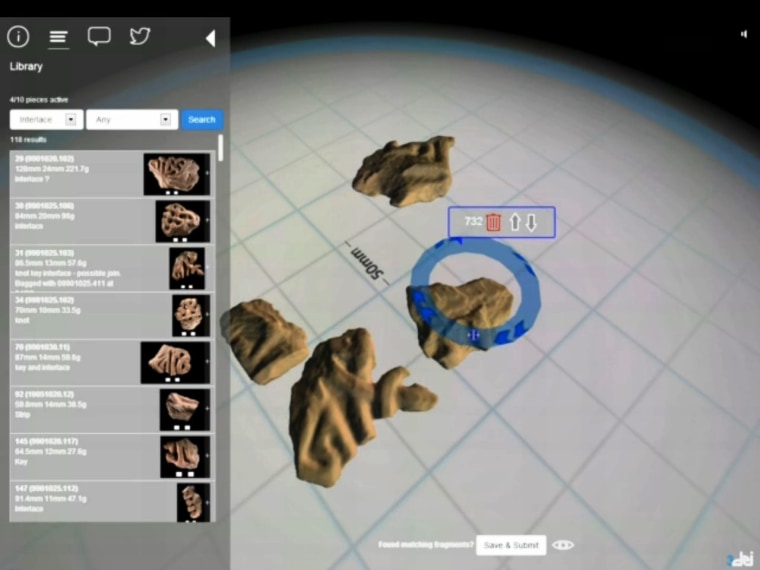
An online game will challenge computer users to solve an archaeological puzzle: how to put together thousands of stone fragments to reconstruct the chiseled design on a 1,200-year-old Scottish monument.
PictishPuzzle.co.uk will make its debut on Oct. 25, thanks to National Museums Scotland and the project's digital designers.
"The principal aim of the project is to create a citizen-science, open-source solution" to the puzzle presented by the Hilton of Cadboll Stone, said Aegir Maciver, director of Relicarte Digital. The stone is thought to have been erected by the Picts near the eastern coast of the Scottish Highlands around the year 800.
Pictish artists carved intricate designs into the 7.5-foot-tall (2.3-meter-tall) slab of sandstone, apparently to celebrate their conversion to Christianity. Over the centuries, however, more than 3,000 bits of stone have been chipped away — some accidentally, others on purpose. In the year 1676, the stone's original carving of a cross was obliterated and replaced with an inscription commemorating a local resident and his three wives.
The upper portion of the stone is now on exhibit at the National Museum of Scotland in Edinburgh, and archaeologists have been looking into how to put together the miscellaneous fragments. With the cooperation of a local hospital, Relicarte and a spin-off company called 3dei had the pieces sent through an X-ray scanner to turn them into a virtual 3-D jigsaw puzzle.
"We have created a software program that allows people with very average computers to go online and interact with a selection of 3-D objects in real time, push them together and try to place them to solve the puzzle," Maciver told NBC News.
The pieces will be grouped into categories — for example, corner pieces, or parts of the design's knotwork. That will help users organize the work into manageable subtasks, as if they were working collectively on a huge jigsaw puzzle. Suggested solutions to parts of the puzzle would be judged by fellow users, and then passed on to the professionals.
Maciver emphasized that the game isn't designed only for video gamers. "We actually tried to design it so it would be usable for everybody," he said.
The final solution will eventually be turned into a virtual representation or a replica that shows what the Hilton of Cadboll Stone looked like centuries ago. And those who participate in the project will come in for some of the credit, Maciver said. Such are the rewards of citizen science.
"It's not only about trying to assemble the puzzle itself," Maciver said. "It's also about how people access and engage with heritage projects."
Update for 10:50 p.m. ET Oct. 11: The Pictish Puzzle is part of the Glenmorangie Research Project, which is an archaeological research program at National Museums Scotland into early medieval Scotland. Some of the results of that research will be featured in an exhibition titled "Creative Spirit," opening at the Museum in Edinburgh on Oct. 25 to coincide with the launch of the online puzzle.
Mhairi Maxwell, an archaeologist at the museum who holds the title of Glenmorangie research officer, said the Hilton of Cadboll Stone is a jigsaw puzzle that's much larger than any one person. "If we can come together to re-fit the pieces, it will be a huge step forward in our understanding," she said in a statement.
More citizen science projects:
- Help scientists decipher a 'lost' gospel
- Citizens enlisted to map Iron Age hillforts
- Astronomers need you to map space warps
Tip o' the Log to Scotland on Sunday and the Daily Mail.
Alan Boyle is NBCNews.com's science editor. Connect with the Cosmic Log community by "liking" the NBC News Science Facebook page, following @b0yle on Twitter and adding +Alan Boyle to your Google+ circles. To keep up with NBCNews.com's stories about science and space, sign up for the Tech & Science newsletter, delivered to your email in-box every weekday. You can also check out "The Case for Pluto," my book about the controversial dwarf planet and the search for new worlds.